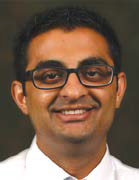View the April 2019 NELA quarterly e-newsletter by clicking here.
View the September 2019 Midwest quarterly e-newsletter by clicking here.
View the April 2019 Midwest quarterly e-newsletter by clicking here.
For patients 45 years of age or older with clinical ASCVD, or 50 years of age or older with type 2 diabetes requiring medication and > 1 additional risk factor, and fasting triglycerides 135-499 mg/dL on maximally tolerated statin, with or without exetimibe, treatment with icosapent ethyl is recommended for ASCVD risk reduction.
We’re pleased to announce that posters presented at the 2019 National Lipid Association (NLA) Scientific Sessions are now available for viewing online!
The NLA accepted over 85 abstracts covering topics across the spectrum of clinical lipidology and cardiovascular disease prevention. This year’s abstracts topics included:
Dear Colleagues:
Greetings! I hope you are off to great start of the summer season, with impactful work and rejuvenating vacations in your sights!
I am honored to be chosen to keep this chair warm for the next year, and excited about the opportunity to serve the NLA, and all the members of the Southwest Chapter. I am grateful to have received this position after it has been in the excellent care of my predecessor, Judy Collins. I hope to move forward with the ideas and hard work she has instituted during her tenure. I also hope to see our chapter grow, involving ever more members as we collectively spread the word about the NLA, and continue to encourage as many as possible to become certified. I want to do my part to help the a
The Further Cardiovascular Outcomes Research with PCSK9 Inhibition in Subjects with Elevated Risk (FOURIER) trial was a randomized trial in 27,564 patients with stable atherosclerotic cardiovascular disease (ASCVD), evaluating evolocumab vs placebo added to statin therapy.(1) The hazard ratio for reduction of the primary endpoint (composite of cardiovascular death, myocardial infarction, stroke, hospitalization for unstable angina or coronary revascularization) and the key secondary endpoint
Article By:
Article By:
Background
In the United States, hypertension accounts for more cardiovascular disease (CVD) deaths than any other modifiable CVD risk factor and is second only to cigarette smoking as a preventable cause of death. In 2010, high blood pressure (BP) was the leading cause of death and disability worldwide. Although hypertension remains the most common modifiable risk factor for CVD, a large portion of the population still has BP that remains uncontrolled.





.jpg)
.png)



















